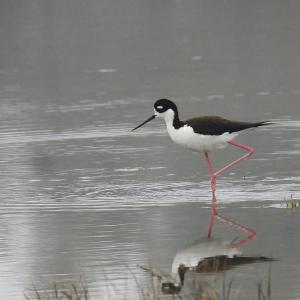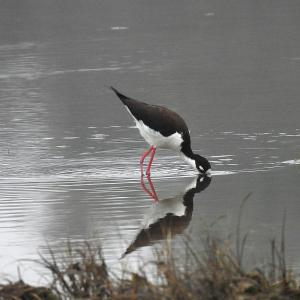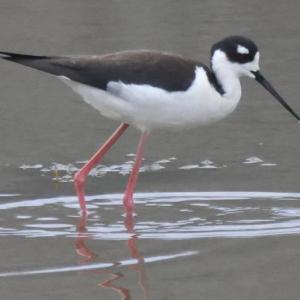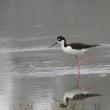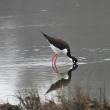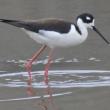Stilt Birding
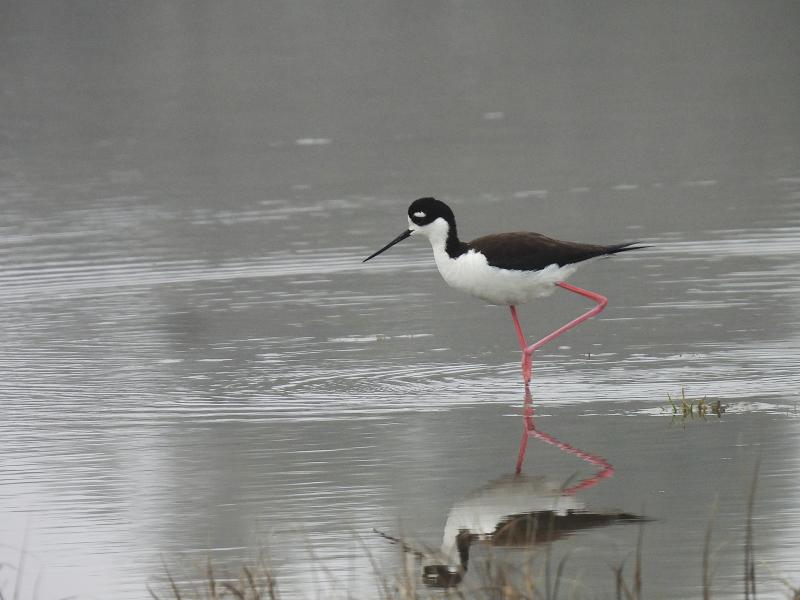 Maine is currently hosting several of the rare-to-the-state black-necked stilt this spring, including in Cape Elizabeth, where this photo was taken. Courtesy of Rob Speirs
Maine is currently hosting several of the rare-to-the-state black-necked stilt this spring, including in Cape Elizabeth, where this photo was taken. Courtesy of Rob Speirs
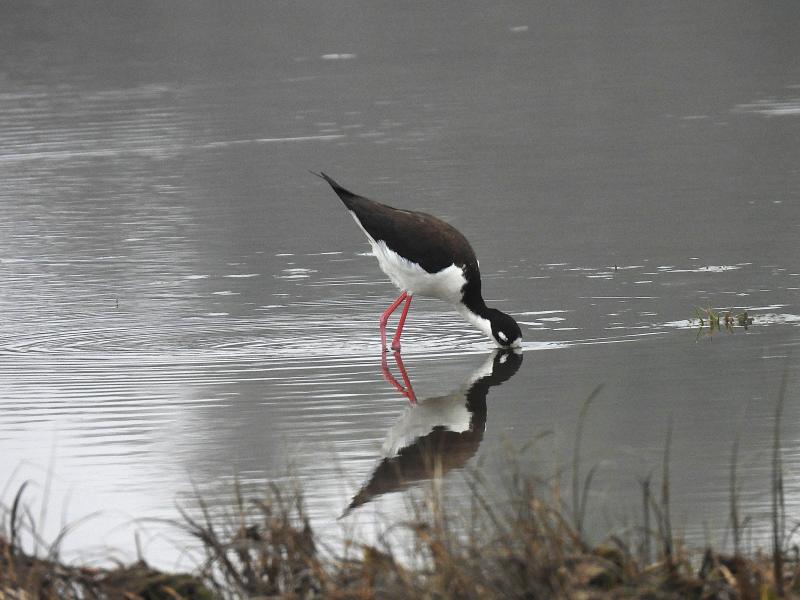 All of the world's stilt species have long, pink legs; black bill, and striking white and/or black plumage. Courtesy of Rob Speirs
All of the world's stilt species have long, pink legs; black bill, and striking white and/or black plumage. Courtesy of Rob Speirs
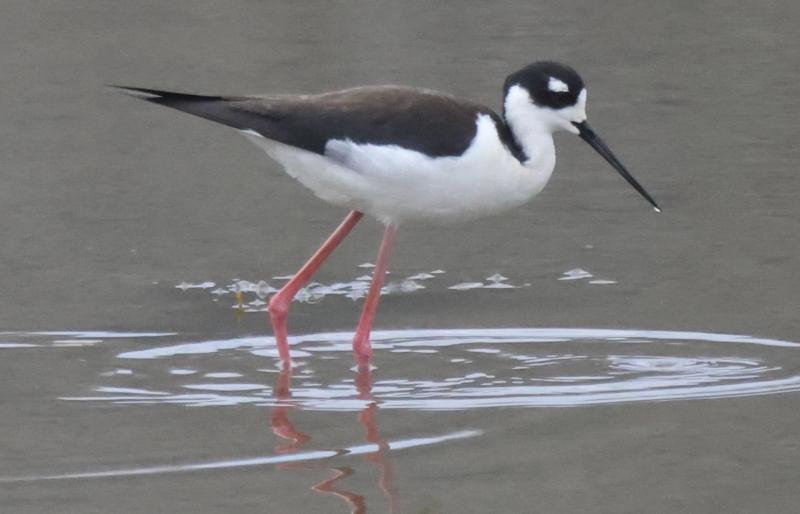 Black-neck stilts are birds of shallow wetlands where they feed on small invertebrates. Courtesy of Ed Flanders
Black-neck stilts are birds of shallow wetlands where they feed on small invertebrates. Courtesy of Ed Flanders
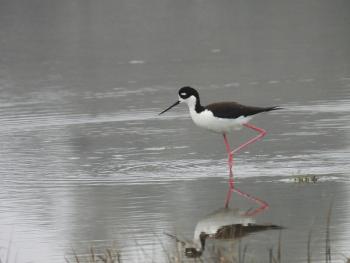 Maine is currently hosting several of the rare-to-the-state black-necked stilt this spring, including in Cape Elizabeth, where this photo was taken. Courtesy of Rob Speirs
Maine is currently hosting several of the rare-to-the-state black-necked stilt this spring, including in Cape Elizabeth, where this photo was taken. Courtesy of Rob Speirs
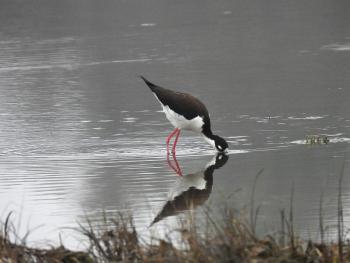 All of the world's stilt species have long, pink legs; black bill, and striking white and/or black plumage. Courtesy of Rob Speirs
All of the world's stilt species have long, pink legs; black bill, and striking white and/or black plumage. Courtesy of Rob Speirs
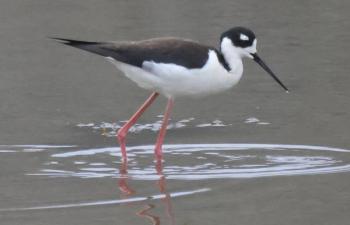 Black-neck stilts are birds of shallow wetlands where they feed on small invertebrates. Courtesy of Ed Flanders
Black-neck stilts are birds of shallow wetlands where they feed on small invertebrates. Courtesy of Ed Flanders
Even if you had never seen a bird called a “stilt,” you would probably guess that it would be a bird with proportionately long, thin legs—and you’d be right. Stilts occur across much of the world, and although the exact number of species continues to be a point of study, all have long, bright pink legs, a long neck, and a long, black bill. All are birds of striking black and white plumage except for the rare black stilt of New Zealand which is, as the name suggests, all black.
Many ornithologists consider there to be four stilt species across the world (five if you include the somewhat unique banded stilt of western Australia). Black-necked stilt is the only species that inhabits North America, and it occurs south to South America. In the U.S., black-necked stilts are birds of coastal marshes along the southeastern coast and in wetlands across the western states and along the California coast.
Maine has been lucky to occasionally host this striking species, though not often. The earliest record was a specimen taken in May 1899 in Rockland. The second sighting was not until 1976. Since 1990, there have been more than 10 records.
Just a few weeks ago, on April 19th, a black-necked stilt was discovered in Belfast. Although we don’t know its exact length of stay, it hung around until at least April 23rd. Amazingly, black-necked stilts were also found this weekend (May 3-4) at Spurwink Marsh in Cape Elizabeth and on Monhegan Island (also May 3-4). Interestingly, two other black-necked stilts were found and photographed in Nova Scotia in April of this year.
Black-necked stilts in the eastern U.S. were decimated by hunting in the early 1800s; by 1840, they were said to be rare north of Georgia. Once hunting became regulated in the 1900s and wetland conservation began, the birds' numbers started to rebound. Since the 1950s and 1960s, the species has expanded its breeding range back to Delaware in the East and across parts of the western U.S.
The fact that there are stilts of one sort or another across such vast areas of the globe from North and South America, Europe and Asia, and Australia and New Zealand (not to mention distant island archipelagos like Hawaii and the Galapagos), illustrates the long-distance dispersal abilities inherent in the ancestral stock of the stilt clan. Today, that same ability seems readily apparent in the black-necked stilts of North America.
Just as these black-necked stilts have probed the northern boundaries of the range this spring in Maine and Nova Scotia, other individuals have been found into Newfoundland, Quebec, and northern Ontario.
Even within their breeding range, stilts seem to be able to move around as water conditions change from one wetland to the next. They can colonize new places quite quickly and build up numbers in a spot where conditions remain good for them.
We have enjoyed spending time viewing black-necked stilts on the island of Aruba in the southern Caribbean, an essentially desert island where wetlands were historically very ephemeral. Shallow pools would build up on the flat limestone plains near the coast and near mangrove-lined tidal inlets during rainy periods. Stilts can suddenly appear in these spots and nest or feed until the water dries out. In recent decades, water treatment facilities have added permanent wetland features to the landscape as well. As long as these remain open and shallow, stilts will use these features, too.
Despite their long-distance dispersal capacity, we’re not suggesting that Maine will ever host nesting black-necked stilts (although who really knows?). But we do expect that some will keep showing up each spring and summer. With those long, pink legs and striking black and white plumage, they probably will be hard to miss.
Jeffrey V. Wells, Ph.D., is a Fellow of the Cornell Lab of Ornithology and Vice President of Boreal Conservation for National Audubon. Dr. Wells is one of the nation's leading bird experts and conservation biologists. He is a coauthor of the seminal “Birds of Maine” book and author of the “Birder’s Conservation Handbook.” His grandfather, the late John Chase, was a columnist for the Boothbay Register for many years. Allison Childs Wells, formerly of the Cornell Lab of Ornithology, is a senior director at the Natural Resources Council of Maine, a nonprofit membership organization working statewide to protect the nature of Maine. Both are widely published natural history writers and are the authors of the popular books, “Maine’s Favorite Birds” (Tilbury House) and “Birds of Aruba, Bonaire, and Curaçao: A Site and Field Guide,” (Cornell University Press).

